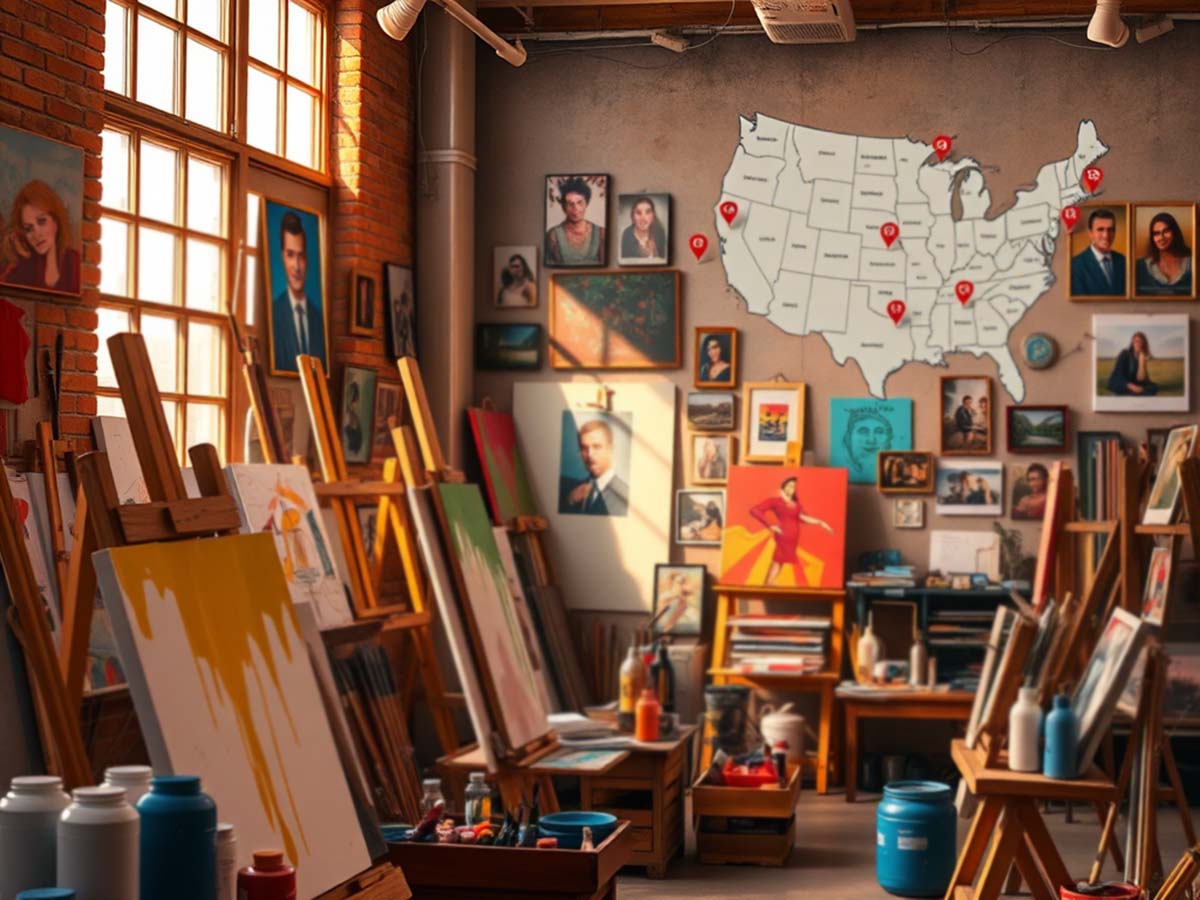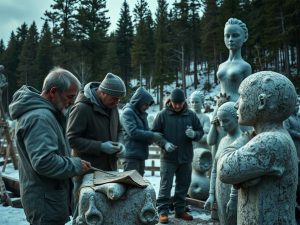
Why Grants Matter for Artists in the Midwest
Creative growth often starts with the right kind of support. For artists in the Midwest region of the United States, financial assistance is becoming more accessible, allowing more individuals to focus on their craft. These funding programs have implications not only locally but globally, especially for those who want to build a solid foundation in arts and culture.
Organizations like saultareaartscouncil.org play a vital role in supporting local talents in Sault Ste. Marie and nearby areas. While they provide helpful resources and events, our focus here is on new opportunities and funding programs appearing across various states in the Midwest—initiatives designed to support artists aiming for success both nationally and internationally.
A Thriving Arts Scene Beyond the Coasts
The Midwest might not be the first region that comes to mind when talking about the arts, but it holds a strong network of communities supporting cultural projects. While cities like New York and Los Angeles are popular hubs, many Midwest towns are creating valuable spaces for creativity.
The presence of grants only enhances this growth. With increasing cultural exchange through travel and digital communication, the region has become more appealing to international artists as well. Institutions like the Sault Area Arts Council actively collaborate with other groups to elevate local artists, showing that even smaller towns can play a central role in the creative world.
Choosing the Right Grant and Planning Ahead
Public and private organizations regularly provide funding for artistic endeavors. From universities to federal agencies, the goal is to uplift cultural projects with real potential. Here are a few steps artists can take to get started:
- Clarify Your Vision: Make sure your project has a clear direction and message.
- Match Your Work to the Right Program: Different grants focus on different fields like visual art, music, film, or theater.
- Understand the Requirements: Each program has unique deadlines and criteria. Plan ahead to meet them.
- Reach Out to Local Arts Groups: Organizations like Sault Area Arts Council can offer guidance or connect you with helpful contacts.
Taking these steps improves your chances of success. Selecting the right program and preparing a solid plan can lead to more meaningful artistic growth.
Local Support, Global Impact
These grant opportunities go beyond monetary value. They also encourage dialogue, collaboration, and awareness of the role art plays in society. When artists have access to sufficient resources, they can create projects that reach beyond their communities.
Imagine an art exhibit or a musical performance funded by a Midwest grant. Shared on digital platforms, these works could inspire audiences worldwide. This kind of interaction helps connect local creativity to a broader audience, allowing a Filipino painter or a sculptor from Asia to bring fresh perspectives to the United States—and vice versa.
Building Skills and Visibility
Support doesn’t stop with financial aid. Many grant programs also include mentorships, workshops, and networking opportunities. For emerging artists, this exposure can lead to long-term success.
Working alongside established professionals opens doors to learning and future collaborations. An artist whose work is featured in a well-supported exhibit might also attract attention from international galleries or collectors. Eventually, this experience can be shared with others back home, helping the whole community grow.
Challenges Along the Way
Though promising, applying for grants is not without obstacles:
Increased Competition: More funding means more applicants. A strong portfolio and detailed plan are essential.
Financial Regulations: International funding may come with legal or tax-related responsibilities.
Balancing Vision and Expectations: It’s important to stay true to your creative style while aligning with the grant’s goals.
Overcoming these challenges builds resilience. Even a rejected application can teach valuable lessons for future submissions.
Strengthening Local Economies
Art also contributes to economic development. When funded events attract visitors—like gallery openings or concerts—local businesses such as hotels and restaurants see a boost in activity.
In areas like the Midwest, an active arts community can elevate the region’s image and attract investment. Organizations like the Sault Area Arts Council play an essential part in this by encouraging projects that foster both cultural and financial connections.
Role of Nonprofits and Community Support
Nonprofit groups and private donors also fuel artistic initiatives. Many fund programs in underserved areas or partner with corporations as part of broader social responsibility efforts. These collaborations benefit both business and art, giving creators stable support for long-term projects.
For example, an artist might receive sponsorship from a private firm to launch a community mural project, helping beautify a neighborhood while highlighting local stories.
Collaboration Across Borders
Global partnerships also create exciting possibilities. An artist from Asia working with a Midwest sculptor can produce powerful works that bridge cultures. These collaborations attract attention from media, critics, and tourists alike.
Through shared exhibits or international symposiums, cultural exchange becomes more than just an idea—it becomes a lived experience.
Technology and Digital Expansion
Today’s artists often present their work online. With grants supporting digital tools, creatives can now build projects involving virtual reality, digital paintings, and online galleries.
Platforms for streaming, crowdfunding, or remote workshops also help spread work to broader audiences. Support from grants makes these innovations more attainable, giving more artists the opportunity to be seen.
Real Success Stories from the Region
Many artists in the Midwest have found success through these programs. Independent filmmakers in Minnesota, for instance, have gained recognition from international festivals thanks to local funding.
Writers and poets in Michigan have used grants to publish meaningful works. These achievements not only uplift individual careers but also enhance the region’s reputation as a cultural hub.
Supporting Art Education
When schools and universities receive grant money, they can offer more tools and training for aspiring artists. Students benefit from improved facilities, mentorships, and advanced workshops.
By nurturing creativity early, these institutions help raise a generation that values both technical skill and cultural expression.
Staying Committed Through Rejection
Not every application leads to success. Artists should expect and accept setbacks. Submitting to multiple programs is part of the process.
A well-prepared proposal—with realistic goals and clear documentation—can make a strong impression. Sample works or small completed projects can help demonstrate capability, especially for first-time applicants.
International Partnerships and New Opportunities
Grants don’t only come from the U.S. International NGOs and cultural groups sometimes co-fund projects between countries. These partnerships expand audience reach and open doors to global presentations.
Through these initiatives, the universal nature of art is celebrated, breaking down boundaries and fostering mutual understanding.
Adapting to Change
Artists must stay ready. While funding trends shift, ongoing development—whether in skills, networking, or communication—keeps creatives prepared.
Understanding emerging tools or practicing public speaking may seem unrelated to art, but they can help secure funding and widen impact.
Inspiring Future Generations
Receiving a grant can turn an artist into a role model. By giving back—through workshops or mentorship—artists inspire the next wave of talent.
True success isn’t just personal achievement. It’s about how many lives you touch and how deeply you influence your community.
A Living Tribute to Creativity
Art in the Midwest continues to flourish. Through festivals, forums, and digital events, the region connects with people across the globe.
Whether streamed online or shown in galleries, each project becomes part of a bigger picture—one that celebrates diversity, unity, and the creative spirit that binds us all.

